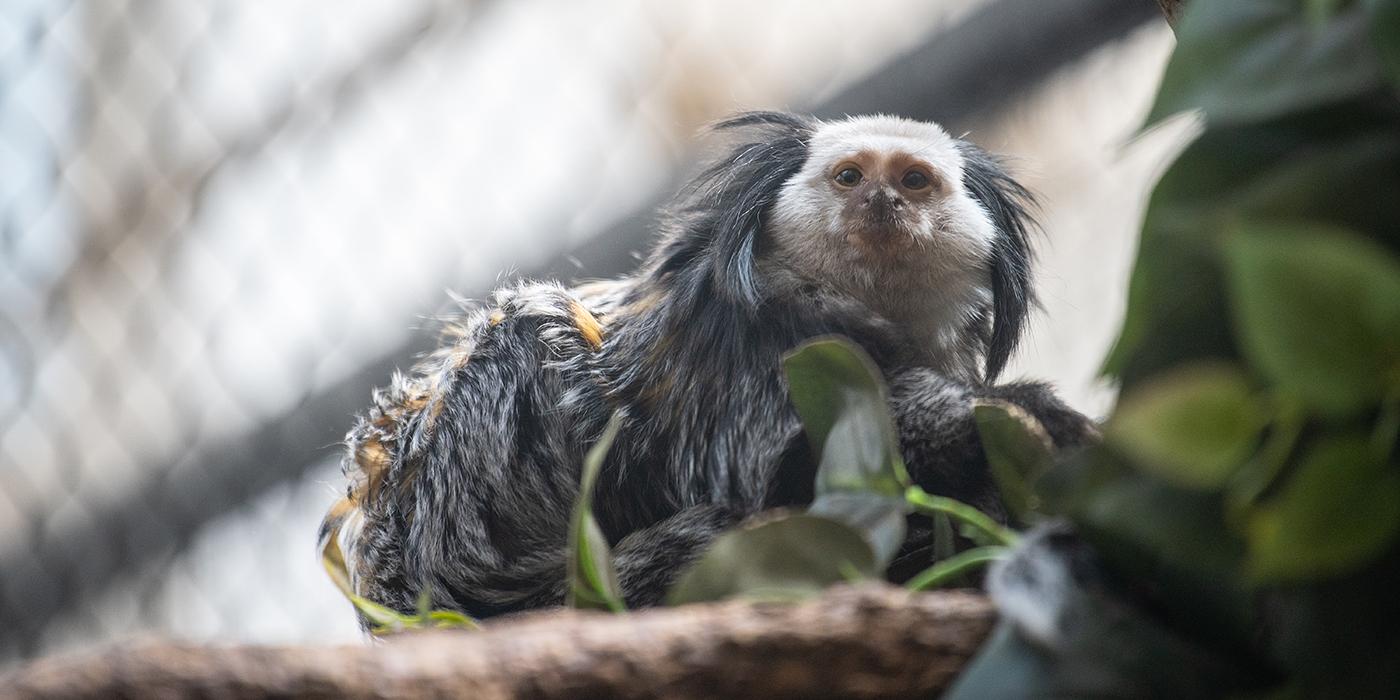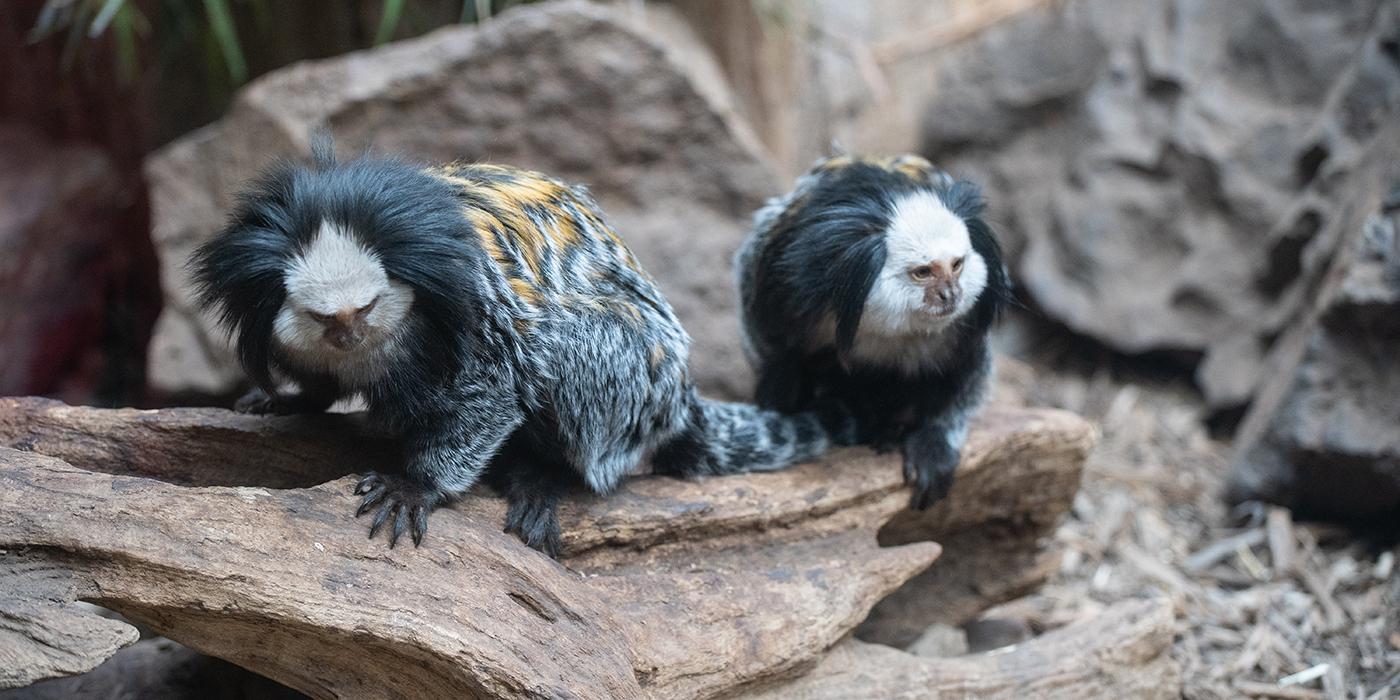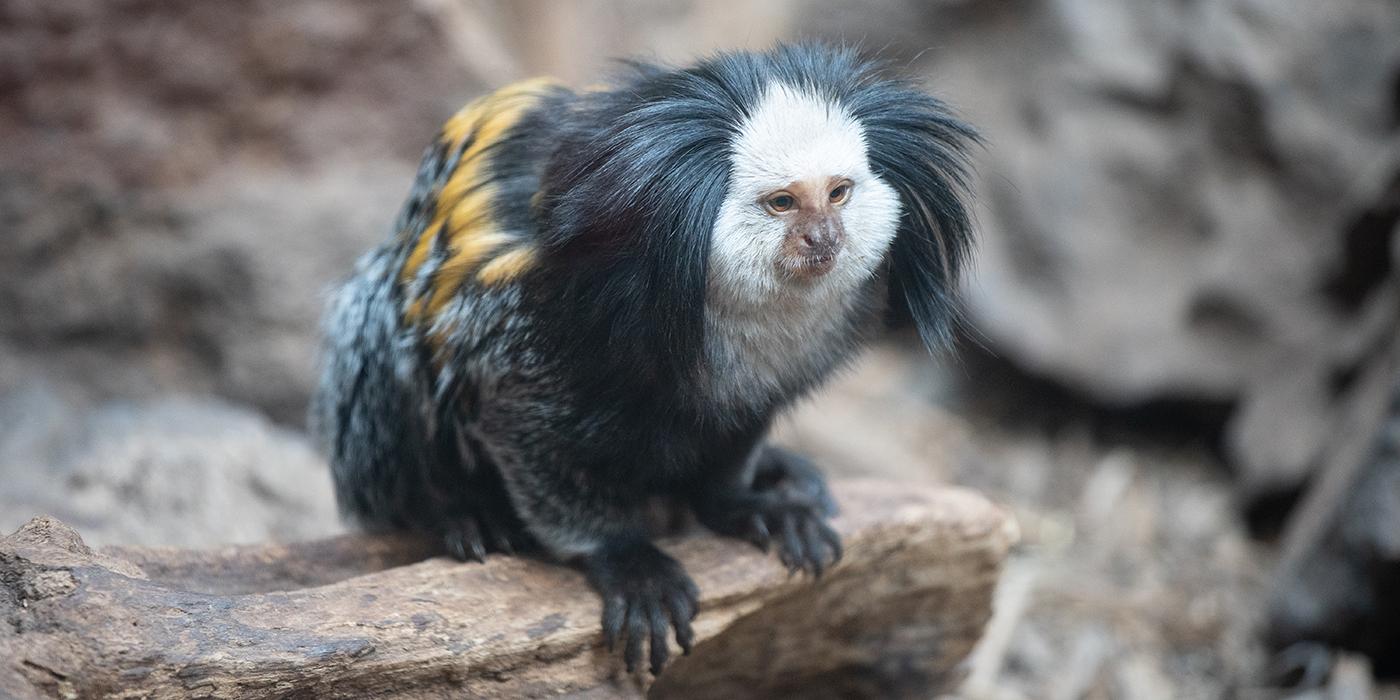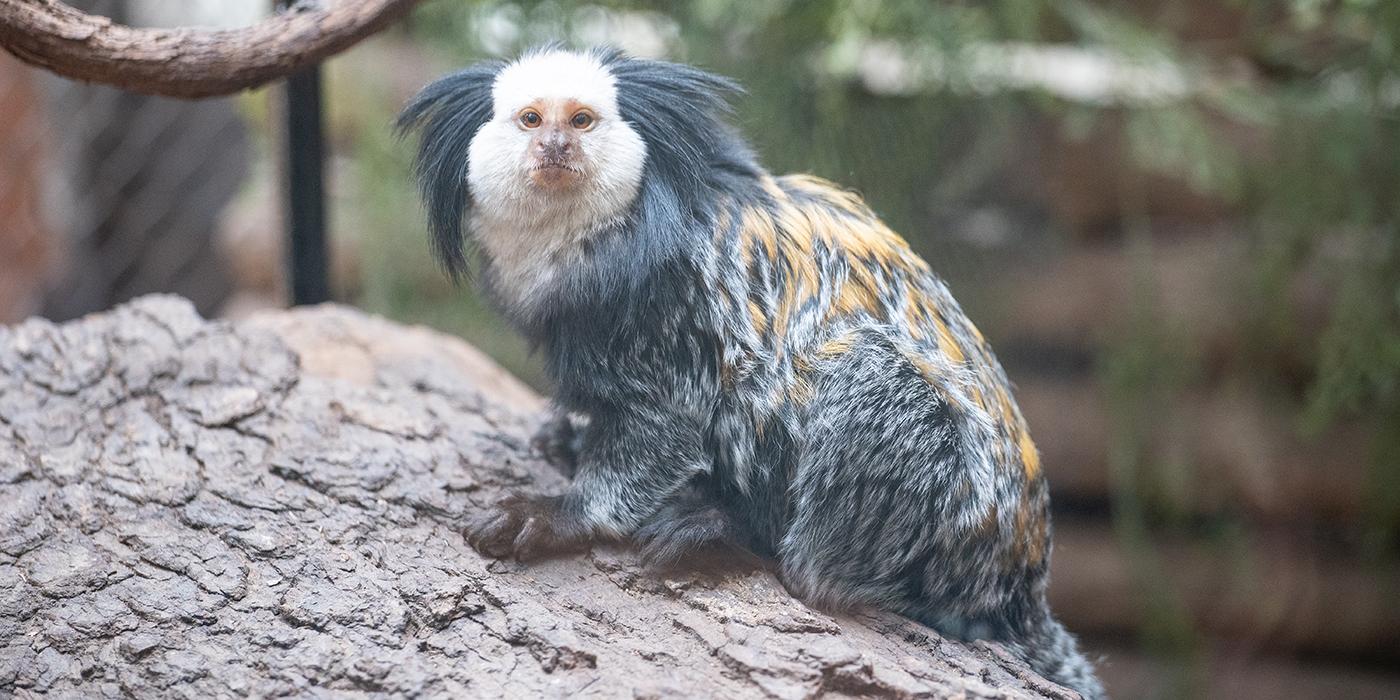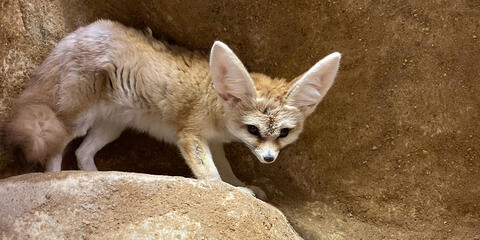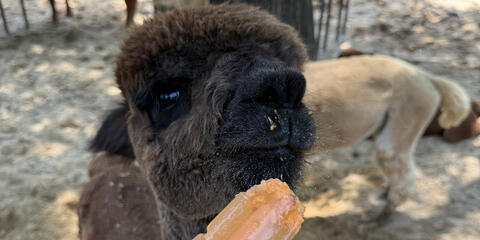Marmosets are small, squirrel-like monkeys native to the lowland rainforests of Brazil. They have black-brown fur, white faces and black ear tufts. Sharp claws help these arboreal primates cling to tree trunks.
Physical Description
Males and females look similar; Geoffroy's marmosets have a blackish-brown coat with elongated black ear tufts. They have a white forehead, cheeks and throat, with dark brown under parts and a black tail that is lightly ringed.
Size
They are about 8 inches in length (20 centimeters) plus a tail of about 11 inches (29 centimeters) and weigh between 9 to 13 ounces (260 to 380 grams). Scientists suggest that they have evolved to take advantage of an insect diet and as a part of the process, have become smaller.
Native Habitat
Geoffroy's marmosets are found in the lowland rainforests of Brazil.
Lifespan
They can live for over 10 years.
Food/Eating Habits
Marmosets and tamarins eat fruits, flowers, and nectar, as well as animal prey including frogs, snails, lizards, spiders and insects. They have been known to exploit the insects disturbed by army-ant swarm raids.
Marmosets also eat the gum of trees, produced by trees' defense system against damage to its bark. These monkeys are the only primates that regularly gouge their own holes to tap this gum (often gum is produced as a response to insect boring). Marmosets have relatively large incisors that they use as a chisel to collect the gum. The marmosets anchor their upper incisors in the bark and gouge upwards with the lower incisors. The amount of gum recovered is usually quite small and marmosets only spend about two minutes at any one hole.
At the Zoo they are fed canned marmoset diet, bananas, grapes, apples, string beans, fruit and mealworms. They are often given gum for enrichment purposes as well.
Social Structure
Geoffroy's marmosets live in large social groups that can include as many as 20 individuals (more commonly groups of eight to 10) in which fathers, as well as other group members, provide extensive care for the young. Adult offspring may remain in the group and help care for their younger siblings.
Reproduction and Development
This species is sexually monogamous and the males coil their tails as a sexual display before copulation. The gestation period is around 4.5 months. Females have multiple births, usually twins. The twins are not identical, but they do share the same placenta with extensive mixing of blood of the two fetuses—a phenomenon known as chimerism.
After birth, others, including males, help raise the offspring
Conservation Efforts
The primary threat to Geoffroy's marmosets is habitat loss. There has been widespread destruction of the Atlantic forest, resulting in a patchy distribution, though population numbers are still abundant. Like many other small primates, they are occasionally collected for the pet trade.
Help this Species
- Reduce, reuse and recycle — in that order! Cut back on single-use goods, and find creative ways to reuse products at the end of their life cycle. Choose recycling over trash when possible.
- Be a smart consumer. Choose products made with sustainable ingredients, such as Smithsonian certified Bird Friendly coffees, which support farmers striving to limit their impact on wildlife and habitat.
- Choose your pets wisely, and do your research before bringing an animal home. Exotic animals don’t always make great pets. Many require special care and live for a long time. Tropical reptiles and small mammals are often traded internationally and may be victims of the illegal pet trade. Never release animals that have been kept as pets into the wild.

